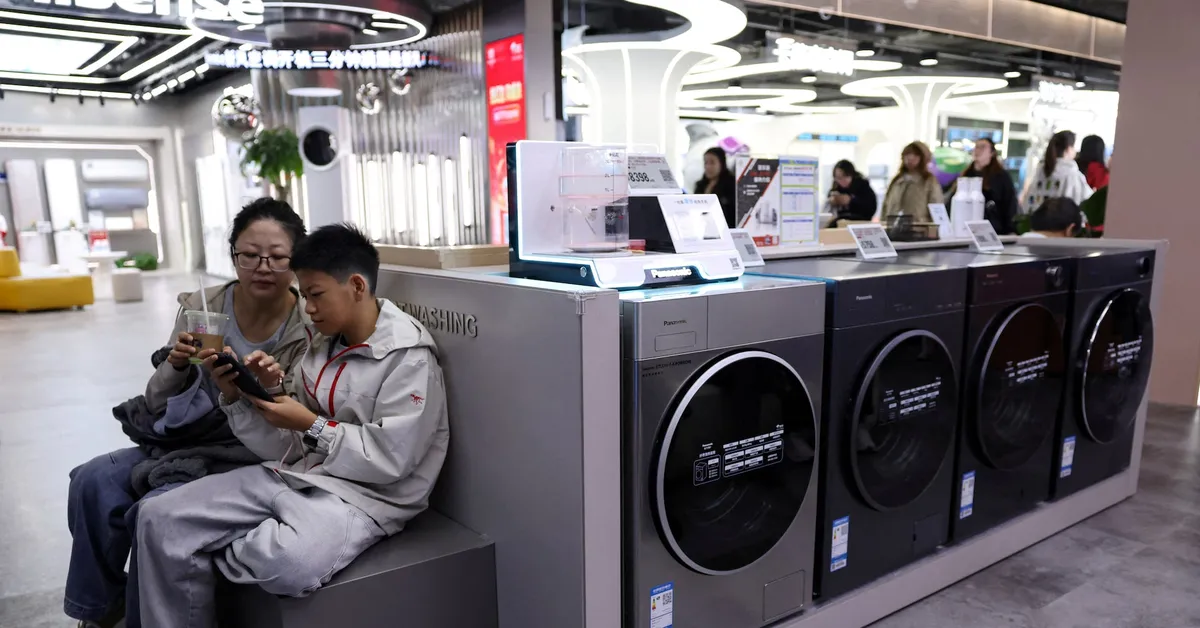
On October 20, 2023, China's economic growth was reported to have slowed to its weakest pace in a year during the third quarter. The decline can be attributed to ongoing challenges such as a property crisis and escalating trade tensions, which have adversely affected demand. As a result, Chinese policymakers face the formidable task of rebalancing GDP drivers, shifting the focus towards increased domestic consumption.
Recent data revealed that the gross domestic product (GDP) grew by 4.8% from July to September, a decline from 5.2% in the previous quarter. This figure aligns with analyst predictions from a Reuters poll. While China aims for a full-year growth target of around 5%, market sentiment suggests that the country may fall short of this goal. Dan Wang, China director at Eurasia Group, commented that even with stimulus measures, growth is expected to be below 5%. However, the data for the first three quarters indicates that China might still achieve its target, demonstrating resilience amid external pressures, including tariff threats from the U.S.
On a quarterly basis, the GDP grew by 1.1% in the third quarter, exceeding forecasts of a 0.8% increase and slightly up from the revised 1.0% gain in the previous quarter, according to the National Bureau of Statistics.
The renewed trade tensions with the United States have underscored the vulnerabilities within China's economy, which heavily relies on manufacturing and foreign demand. This situation has led to increasing expectations that Chinese leaders may consider necessary reforms to shift growth towards domestic consumption. Although China experienced a rebound in export growth in September, broader economic indicators suggest that momentum is waning. Deflationary pressures continue to affect the economy, despite attempts to manage overcapacity and intense competition among businesses.
Moreover, despite robust headline figures, exporters are beginning to feel the strain of increased U.S. tariffs imposed earlier this year, prompting many to explore new market opportunities. U.S. President Donald Trump has threatened to raise tariffs on Chinese imports by an additional 100% starting November 1, although U.S. officials have indicated a willingness to ease tensions in their tariff dispute.
In light of these economic challenges, Chinese leaders are convening for a closed-door meeting from Monday through Thursday to discuss various topics, including the country's 15th five-year development plan. This plan is expected to prioritize high-tech manufacturing in response to the intensifying rivalry with the United States. Investors are also eagerly anticipating the upcoming Politburo meeting and the Central Economic Work Conference, scheduled for December, which will provide insights into economic policies for the coming year.
The fourth quarter is expected to be markedly different, with a heavy emphasis on investment and a lighter focus on consumption. Tianchen Xu, a senior economist at the Economist Intelligence Unit in Beijing, noted that negative investment growth is something policymakers aim to avoid. Supportive measures implemented since September, such as policy finance tools and frontloaded government bond issuance, are geared towards public investment projects.
Separate data released on Monday indicated that industrial output surged to a three-month high of 6.5% year-on-year in September, up from a 5.2% increase in August and surpassing the forecast of 5.0%. Conversely, retail sales growth slowed to its lowest level in ten months, registering a growth of just 3.0% in September, down from 3.4% in August, which matched analysts' expectations. Additionally, fixed asset investment contracted by 0.5% in the first nine months compared to the same period last year, contrasting with a 0.5% growth recorded from January to August.
The ongoing property crisis has had a significant negative impact on growth and consumer confidence in China, further complicated by the ongoing trade disputes with the United States. Recent reports indicate that property investment in China fell by 13.9% in the first three quarters year-on-year, following a 12.9% drop in the January-to-August period, highlighting the pressing challenges facing the Chinese economy.